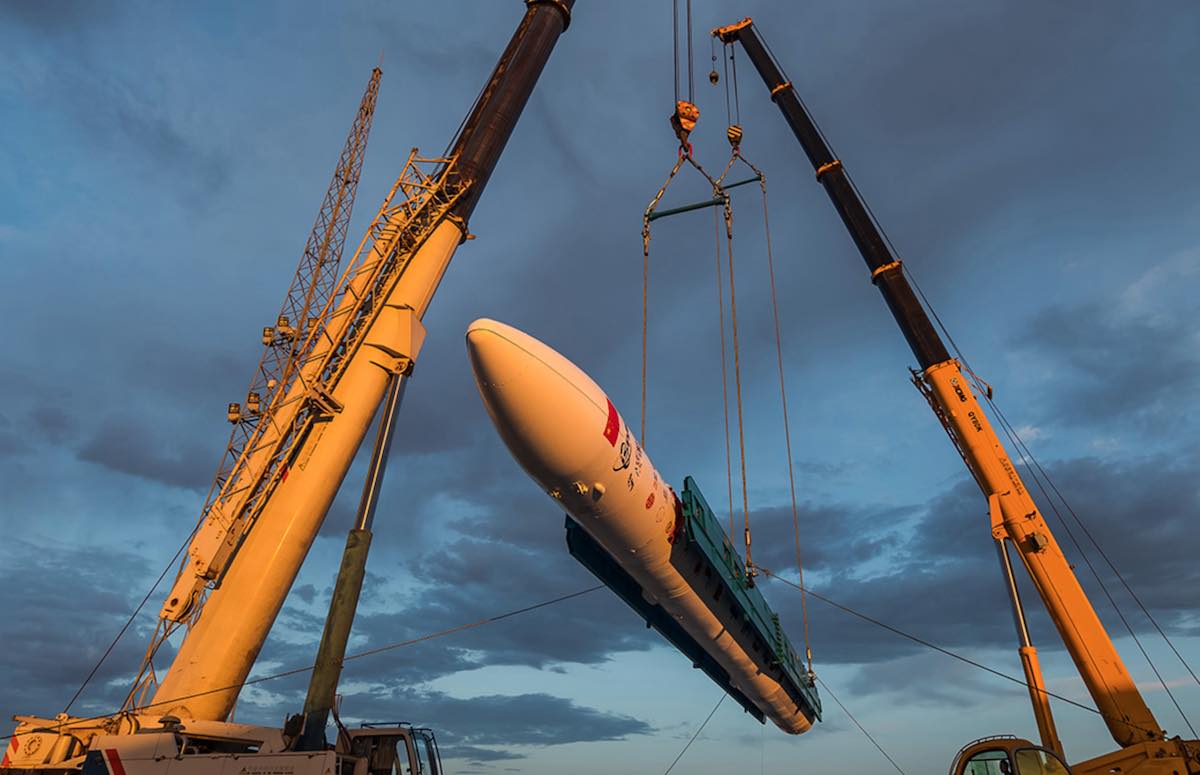
A small satellite launcher developed by the Chinese startup iSpace failed to place its Earth observing payload into orbit Friday, the third consecutive failure for the company’s Hyperbola 1 rocket.
The solid-fueled Hyperbola 1 launcher took off from the Jiuquan space center in northwestern China at 3:09 a.m. EDT (0709 GMT) Friday, or 3:09 p.m. Beijing time. But China’s state-run Xinhua news agency said the rocket encountered “abnormal performance” during the flight.
The cause of the failure is under investigation, Xinhua said.
The Hyperbola 1 rocket is one of a growing number of small Chineses launchers developed on a commercial model. A successful Hyperbola 1 mission in 2019 made iSpace the first firm outside China’s traditional state-owned space industry to launch a payload into orbit.
But iSpace has now suffered three consecutive launch failures. Engineers upgraded the Hyperbola 1 rocket after the 2019 mission, and two iSpace launches failed to place satellites into orbit in February and August of last year.
The payload on Friday’s failed launch was believed to be a high-resolution Earth-imaging satellite for the Chinese Jilin 1 remote sensing constellation.
The Hyperbola 1 rocket — also called the SQX-1 — is a four-stage rocket capable of deploying a payload of up to 660 pounds, or 300 kilograms, to a 310-mile-high (500-kilometer) sun-synchronous orbit, according to iSpace. The Hyperbola 1 stands approximately 78 feet (24 meters) tall, and produces about 173,000 pounds of liftoff thrust.
Enabled by a policy change in 2014 to permit the flow of private capital in China’s launch industry, companies like iSpace established in the last few years have quickly fielded small solid-fueled launchers. Many, or all, of the first generation of privately-funded Chinese launchers appear to use rocket motors derived from Chinese ballistic missiles.
In 2020, another Chinese launch company named Galactic Energy became the second Chinese startup managed independently from the country’s legacy state-owned space contractors to launch a rocket into Earth orbit. Galactic Energy’s second launch of its Ceres 1 satellite booster was also successful in 2021.
Two other companies, LandSpace and OneSpace, have launched orbital-class rockets unsuccessfully.
China’s traditional state-owned space industry contractors have also branched out to develop small satellite launch vehicles. China Rocket, a spinoff of the China Academy of Launch Vehicle Technology, or CALT, successfully launched the orbital-class solid-fueled Jielong rocket in 2019.
CALT also has developed and launched the solid-fueled Long March 11 rocket 13 times, all successfully. Another state enterprise in China’s government-dominated space industry, called CASIC, operates the Kuaizhou 1 and Kuaizhou 11 solid-fueled launch vehicles.
Many of the new wave of Chinese launch companies, including iSpace, are planning more powerful liquid-fueled rockets to carry heavier satellites into orbit.
The Hyperbola 2 rocket under development by iSpace is designed to be reusable, with its first and second stages driven by engines fueled by methane and liquid oxygen. The Hyperbola 2 rocket will stand 92 feet (28 meters) tall, and its first stage attempt a propulsive landing, allowing iSpace to recover, refurbish, and reuse the booster.
Email the author.
Follow Stephen Clark on Twitter: @StephenClark1.
